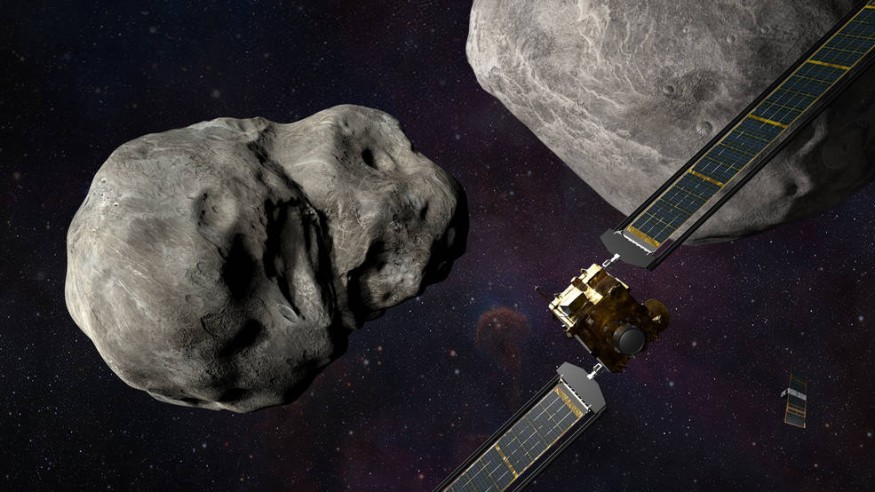
The NASA Double Asteroid Redirection Test (DART) spacecraft, which is aimed at destroying the near-Earth asteroid system 65803 Didymos, has returned its first photographs, indicating that its camera is functioning correctly has survived the launch rigors.
The photographs were captured by the Didymos Reconnaissance and Asteroid Camera for Optical Navigation (DRACO) telescopic camera onboard the spacecraft. On Dec. 7, DART opened the camera cover, much to the relief of scientists worried about the camera being jostled during launch.
"On Tuesday, December 7, the spacecraft popped open the circular door covering the aperture of its DRACO telescopic camera and, to everyone's glee, streamed back the first image of its surrounding environment," NASA wrote.
"Taken about 2 million miles (11 light seconds) from Earth - very close, astronomically speaking - the image shows about a dozen stars, crystal-clear and sharp against the black backdrop of space, near where the constellations Perseus, Aries, and Taurus intersect."
NASA's DART Spacecraft Shares First Images From Space
According to Sci-News, the image was taken at a distance of about 3.2 million kilometers (2 million miles) from Earth, which is very close in astronomical terms. It shows about a dozen stars, crystal-clear and sharp against the black backdrop of space, near the intersection of the constellations Aries, Perseus, and Taurus. To everyone's delight, DART pushed open the round door covering the aperture of DRACO and beamed back the first image of its surroundings.
The DART team utilized the image's stars to figure out how DRACO was oriented, delivering the first measurements of how the camera is pointing in relation to the spacecraft.
With those data, the crew could precisely maneuver the spacecraft to point DRACO at objects of interest, such as Messier 38, popularly known as the Starfish Cluster, which was recorded in another photograph by DART on December 10. Messier 38 is a star in the constellation Auriga that is 3,480 light-years away from Earth.
About DART's DRACO Camera
CNet said DART is NASA's first planetary defense mission. It will put to the test the theory that a spaceship might push a potentially dangerous asteroid and alter its trajectory sufficiently to save it from colliding with Earth. Didymos and Dimorphos pose no threat to Earth, yet they are ideal test subjects.
According to SciTechDaily, DRACO (Didymos Reconnaissance and Asteroid Camera for Optical Navigation) is a high-resolution camera inspired by the imager on NASA's New Horizons probe, which produced the first close-up photographs of Pluto and Arrokoth, a Kuiper Belt asteroid. DRACO will serve as DART's only instrument, capturing photos of the asteroid Didymos and its moonlet, Dimorphos, as well as assisting the spacecraft's autonomous guidance system in guiding DART to its final kinetic impact.
Johns Hopkins APL developed and managed DART for NASA's Planetary Defense Coordination Office. DART is the world's first planetary defense test mission, causing Dimorphos' velocity in space to slightly alter a kinetic collision. While neither asteroid poses a direct threat to Earth, the DART mission will show that a spacecraft can travel independently to a kinetic impact on a relatively small target asteroid and that this is a practical method for deflecting a hazardous asteroid if one is ever located. DART will achieve its goal on September 26, 2022.
Check out more news and information on Space in Science Times.










